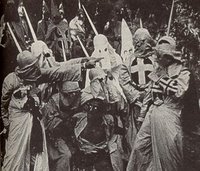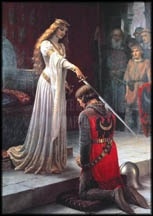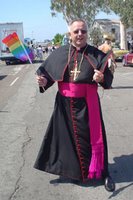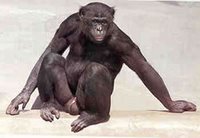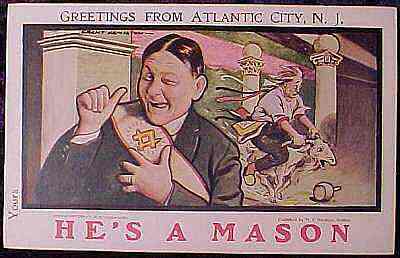
by W:.Tim Bryce, PM, MPS, timb001@phmainstreet.com, Palm Harbor, Florida, USA
"A Foot Soldier for Freemasonry"
"Pessimist: The optimist who didn't arrive." — Bro. Samuel Clemens (Mark Twain), Polar Star Lodge No. 79 A.F.& A.M., St. Louis, MO
In my last article entitled
Fighting City Hall, I'd one Brother drop me a note that I was too pessimistic; that I was describing the rift between the old-guard and the young-guard with broad strokes. He contended the problems I was describing was geographical in nature and unique to "Dixie" (the southern United States). While I admit I talked in generalities with a couple of specific examples, I received numerous e-mails from Brothers around the world who supported my argument. No, I do not believe the problem is unique to Dixie but, rather, a universal problem facing all jurisdictions.
The following is a sampling of the e-mails I received. The identities of the authors have been omitted to protect their anonymity.
FROM MANITOBA — I enjoyed your "Fighting City Hall" article. A similar situation occurred in Manitoba recently when the Grand Lodge library was being renovated. The Grand Librarian was relieved after trying to bring our antiquated library up to date. The changes he was trying to implement were considered too radical.
I have contacts in England and they tell me the same thing is going on there - Lodges are forming underground regardless of permission from Grand Lodge! Imagine that!
FROM WASHINGTON STATE — While our Grand Lodge is very much a forward thinking organization, some of our Blue Lodges, Scottish and York Rite, and Shrines all suffer from one or more of the maladies brought forward in your article.
FROM CONNECTICUT — There is an old saying that you catch more flies with sugar than with vinegar. Sounds like some Masons are up against a well entrenched group of men who like the climate at the top of the mountain and most likely will pick their successors. But there are forward looking men in the crowd as well.
I'm now speaking from personal experience, and giving wise council. Be a diplomat, lead them in the direction you want them to go, and let them take the credit, feed their ego if that is what it takes. Rivalry only hurts our craft. Abe Lincoln may have said it first, "A house divided can not stand." A Johnny Reb by the name of Allen Roberts also used those words.
FROM NEW BRUNSWICK — We are going through a similar situation here in New Brunswick. A real power struggle between the Grand Master and wannebe power brokers who brag they can elect or deny an office to anybody they choose. There is a movement underfoot to keep the Deputy Grand Master from reaching the Grand East and they're trying every dirty trick in the book.
City Hall can be taken on. City Hall can be forced to obey the rules the same as everyone else. It just needs someone to have the intestinal fortitude to take them on.
FROM DIXIE (THE SOUTH) — I have been reading your recent articles with much interest. Our fraternity has contributed so much to freedom and change within our society. It is distressing that it now seems to have adopted some of the methods it has resisted throughout history. Sad to say but the future does not look bright.
FROM NEW MEXICO — One of the things I discovered as a Past Master of my lodge in Albuquerque was that you can have fun in lodge and keep all the tenants of Masonry intact. Once you start having fun, the grouches either leave or start enjoying lodge. I shut one old grouch up when my Chaplin called and said he had been driving over eight hours direct from Denver Colorado (440 miles) and still had to drive home to change clothes to attend lodge and, therefore, would be a little late. This would have resulted in him driving another 70 miles. 35 miles past the lodge and then 35 miles back, then an additional 35 miles home after lodge. He said he was in shorts and flip flops. I told him to just stop by the lodge, no matter how he was dressed. He attended and wore the Chaplain's robe. The old grouch complained to me how the Chaplain was dressed and I told the grouch that I would rather have the man and his heart in lodge, than to have his cold fancy suit in lodge. Sometimes you need to bend to the wind like a tree as opposed to breaking a limb off by being too rigid.
FROM DIXIE (THE SOUTH) — I don't know if I fit in with the old guard and know I don't fit in with the new ones. I'm 49 years old and been a Mason for 27 years.
I've not attended lodge in my hometown in years. When I first transferred down here, I attended every meeting. Still, I was treated like an outsider and had no fellowship at all. Same ole, same ole. Eat a snack (alone), open lodge, read the minutes, bills, take up a collection, close lodge and go home.
No one has ever called me or had any contact with me. Frankly, they couldn't care less if I attended the meetings or not. I'm not one of the homegrown nor influential men at the lodge.
My wife asked my why I keep paying my dues every year but don't go to lodge. She was really disappointed when not one single Lodge nor a Brother Mason even give us any info to relocate to their area. Much less an offer to help.
We are still planning on relocating to the mountains this spring. I will go to the nearest lodge wherever we move and just hope that I fit in and people will receive me with a warm welcome and not a cold shoulder like they have here.
FROM OHIO — I just finished reading your article, "Fighting City Hall." First, you had a good analogy between the mainframe and PC mentality. Where I work, that battle rages on. Anyway, getting to the subject at hand, it is a very nasty battle but one that must be ended. Ours is an organization based very deeply in tradition. That is what makes it so appealing in many respects. However, we can keep our identity while adjusting to the changing times. I joined DeMolay in 1972. I joined Masonry in 1978. I was a junior officer for two years before I left the line and discontinued attending due to the pompous attitudes and demanding manner of our predecessors. I would not leave the fraternity due to my belief and commitment to it. This was not always the case with some members. I simply waited until a time when I felt the attitudes were better. I served as Worshipful Master in the 1990's. Being in my 30's, I still did not get the respect of some of the older Past Masters that the office should dictate. I have subsequently served as a District Education Officer and District Deputy Grand Master. The Past Masters who were troublesome to me and other youthful Masters have moved on. Some have moved out of the state. Some have demitted to more accommodating Lodges for their "needs." Others just quit coming. Those of us who remain use these members as an example of how not to treat the younger members. Unkind as it seems, we must use them as a benchmark to understand what will work and, more importantly, what is detrimental. We now have a very good flow of young members and a young line. We are trying to set the example that everyone is vital and no thought or idea is unwelcome.
FROM DIXIE (THE SOUTH) — I am a new secretary at my Lodge, where we have had our share of "that's the way we have always done it" and where various agendas have been carried out in the ten years since I became a Mason. We will see a bit of this in the next few months as we debate legislation to come up at Grand Lodge, and various factions battle it out. You are right about the statements against individuals – we saw that in the Grand Master's election two or three years ago.
All Lodges face problems of retention, especially of young members and while we have 430 or so members, we have the same problem at our Lodge. Our expenses continue to rise.
I look forward to more of your writing. It is good, and it is needed.
FROM CONNECTICUT — I fully agree with the statements about the "old guard." I was raised a Master Mason in my Lodge in the early 1990's and became Tyler shortly thereafter. I remained at that post for nine years. While I was a member of this Lodge, I saw several ways that we could have made ourselves more visible and ways of gaining new members. However, the "old guard" didn't want to make any changes. After awhile I gave up and obtained a dual membership with another Lodge. After a year, I dropped my membership with my mother Lodge. My current Lodge is very active in town and continues to grow. I'm proud to be a member, knowing they are open to new ideas and in working closely with the community.
FROM DIXIE (THE SOUTH) — I remember a situation a couple of years ago where our Lodge was notified of a Brother from New York who was dying of brain cancer. His daughter contacted the Lodge and told the Master that he wished he could sit in Lodge one last time before passing. Our Worshipful Master contacted the Brother's home Lodge and received an e-mail from the Secretary who extended fraternal greetings to the Brother and a brief report on the Lodge's activities. The Master then took two other Lodge Brothers to visit the dying Brother at his home (he was bedridden). To his credit, the Master went to the Brother, closed the bedroom door for privacy, and opened Lodge. Although the Brother was very sick, he perked up noticeably. The Master read the note from his home Lodge, talked with the Brother and asked if he had a message for his home Lodge (which the Master dutifully conveyed). The attending Brothers then closed the Lodge, thanked the daughter (who was outside), and left. Two weeks later the Brother passed away. Shortly thereafter, the Master received a note from the daughter thanking him for visiting her father and commented that although she didn't know what the group had done, her father's disposition had picked up as a result of the visit. She was grateful for the group's efforts.
When the Worshipful Master reported the visit in Lodge, many of the old guard were appalled that the Master had opened a Lodge without dispensation from the Grand Lodge, that it was most irregular. I don't know, I saw it as a very kind and Masonic act. I just wish I had gone with the Master.
FROM NEW JERSEY — I've been away from our Lodge for several years. I never felt welcome. I came in as my friend was Worshipful Master. I was full of ideas to bring some life into the Lodge. Well, there was a lot of political nonsense. It wrecked the agenda of my friend as Master. I stopped attending Lodge. While a realist, I felt that too many Brothers were not acting like the Masonic ideal.
FROM DIXIE (THE SOUTH) — I've been a Master Mason for over 27 years and almost resigned because of being ignored and made to feel unwelcome.
The one time that I've asked the lodge for any help was when I wrote to dozens of different lodges from Georgia to Pennsylvania and everywhere in-between, only asking general questions about their area because we were thinking of relocating. A few lodges responded but I never heard anything else from them. I also wrote to many individual Brothers, but I did not get a reply.
We need to remember our obligations and in order to get people to attend lodge, lodge must be interesting (not just open lodge, read the minutes, business, then close and go home).
We need to be friendly and helpful to each other and not only to the more wealthy or influential members.
I've not attended lodge in years. Why? Because no one cares if I come or not. When I did attend, I was more or less ignored.
When we first moved here, I attended lodge every time it was open. At the fellowship hour before lodge we would have a light meal (and pass around the hat). I wasn't homegrown nor did I have an important job, so most of the time, I ate alone. The men would shake my hand when I came but had little to say to me after that.
During lodge, the policemen would all sit together, longtime friends would sit together, family sat together and again, most of the time, I sat alone.
When I tried to engage in conversation, I was given short answers. It was clear that I didn't fit in.
Never has anyone at the lodge asked where I lived, what I do for a hobby, asked me to go fishing with them, included me in on local political talk, invited me to their house. If a member saw me in public, I was lucky to get them to nod their head, acknowledging me.
Talk about Southern hospitality... The only lodges that responded to my cry for help were a few lodges in Pennsylvania.
FROM THE PHILIPPINES — Your article about "Fighting City Hall" is not only happening in the United States, but I think in other jurisdictions as well. Like here in the Philippines where the older and younger guards are not on good terms due to ideas and actions that are not amenable to both sides. An example of this is in one Lodge, young guards wanted the stated meeting moved from morning to afternoon because they wanted to have their fellowship right after the meeting, but the oldies do not want it to be moved. So what happened? The oldies cannot convene the meeting because they are not in quorum which is seven or more... in short, the younger ones are the majority and this is one of the classic example that our fraternity is dwindling. It's right that what you have said about that change is constant!
EPILOGUE
In my article "True Masonry," I differentiated how Brothers interpret Freemasonry; some see it as a noble society based on Brotherly love and affection, and there are others who see it as nothing more than a club governed by rules and regulations. True, rules and regulations are needed in any organization to maintain order but there are those who would sacrifice the spirit by which this great fraternity was created to serve a particular political agenda. Make no mistake, the rift between young and old in Freemasonry is about control and who possesses the correct interpretation of Freemasonry.
Some say I am being too pessimistic about the fraternity. Frankly, I think I am a realist who is smart enough to know you cannot treat a patient unless he knows he is sick. No, I am most definitely not a pessimist. To paraphrase Bro. Clemens, "I am an optimist who hasn't arrived."
Keep the Faith.
NOTE: As with all of my articles herein, please feel free to reuse them in Masonic publications or re-post them on Masonic web sites (except Florida). When doing so, please add the following:
Article reprinted with permission of the author and "Freemason Information."
 The following is a short excerpt from the Masonic paper titled "Laudable Pursuit: A 21st Century Response to Dwight Smith." Please download and read the full paper from the Knights of the North.
The following is a short excerpt from the Masonic paper titled "Laudable Pursuit: A 21st Century Response to Dwight Smith." Please download and read the full paper from the Knights of the North. 
